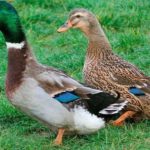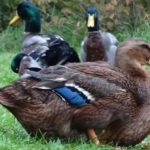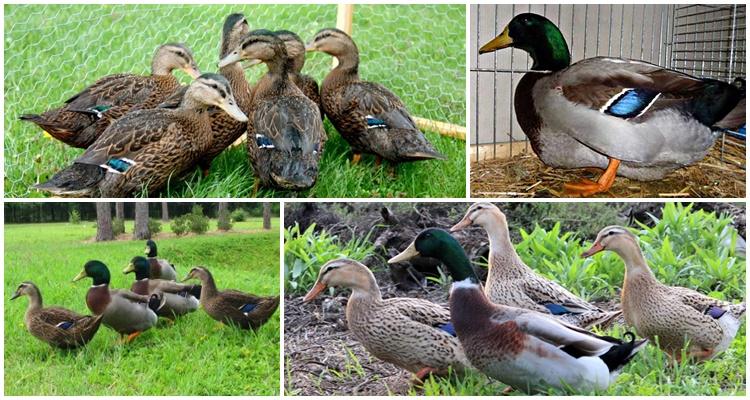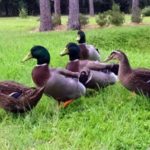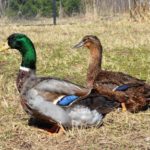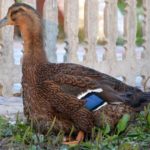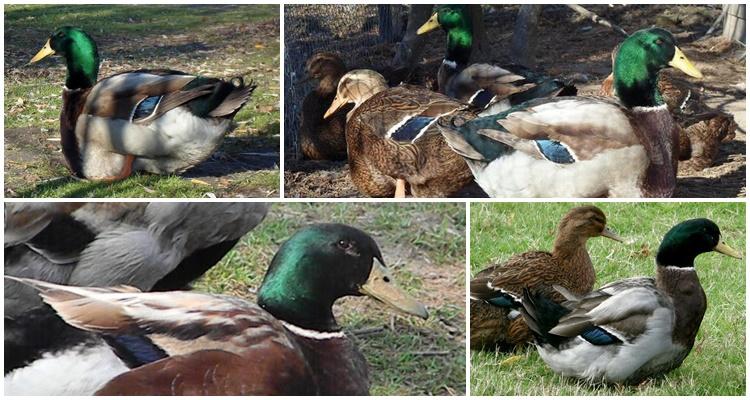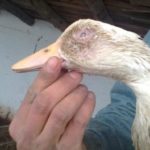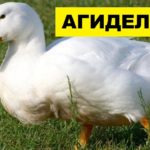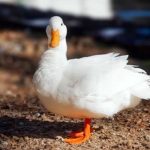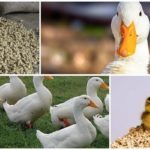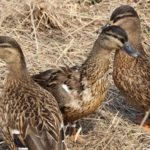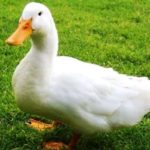Breeds of ducks for meat production always popular with Russian farmers. Among these varieties there are birds with interesting characteristics. Let's consider the description, advantages and disadvantages of the Rouen duck, how to properly raise and feed it in the household, how to treat diseases, as well as the rules and features of breeding.
Story
The Rouen duck was not bred from other breeds of domestic duck, as is usually the case in breeding work. Everything is much more interesting - these are wild birds, domesticated quite recently.The breed was obtained in France, the most promising and productive were selected from the wild stock, and then bred according to the standard scheme.
The Rouen duck is not a common breed and is found quite rarely on farms. The breed in its original form was bred only in France; in England, individuals with a more massive build and dark coloring were bred.
Characteristics and description of the breed
The appearance of the Rouen duck is remarkable, because it not only has a special build, but also the beautiful color of its plumage. It immediately attracts attention, and some bird keepers keep it as an exotic bird. The body of ducks is inclined horizontally, muscular, with a wide, deep chest and oval back. The head is small, light, the neck is curved, the legs are short, the beak is thick, short, yellow with a greenish tint, with a black spot at the end. The weight of adult drakes is 4 kg, ducks are 3.5 kg.
The plumage color is similar to wild birds. The bulk of the feathers of ducks are partridge color; on the wings there is a wide blue-green stripe with a white border. 2 dark stripes run along the sides of the head. Drakes have a dark brown chest and wings, a black tail, a gray back and sides, a green head and upper neck, and a narrow white ring underneath. The wings have a blue-green stripe, like ducks. The paws are dark orange.
Advantages and disadvantages
It is believed that Rouen ducks are poor hens and do not raise ducklings, so they can only be hatched in an incubator.
Rules for keeping and caring for Rouen ducks
Keeping this breed is as easy as most other domestic ducks. They can live in a small room, but it must be clean, bright, and insulated if the bird is kept there in winter. You need to put bedding on the floor and ventilate the room every day while the birds are walking outside. Keep drinkers and feeders clean, especially those in which the ducks received wet mash.
Near the duckling house you need to organize a walk in which to place containers with water: Rouen ducks love to swim. If there is no special container for bathing, they will spill drinking water and make a mess in the house. Otherwise, Rouen ducks do not cause problems; they are calm in nature, do not quack, and get along well with representatives of other types of poultry.
What to feed the birds?
Due to the breed's tendency to obesity, these ducks need to be fed properly. They quickly gain weight, but when they have excess nutrients, they store them as fat. The quality of the meat deteriorates.
The diet for Rouen ducks is the same as for the rest. But it should contain less carbohydrates and fats, both vegetable and animal. Feed only in accordance with the regime, and not ad libitum. The frequency of feeding Rouen ducks is 2 times a day, optimally in the mornings and evenings. Ducks are fed cereal mixtures and fresh grass, vegetable mash with the addition of chalk or premixes. If there is an opportunity to drive them out to a pond, then you should take advantage of it.Ducks can eat aquatic plants and small fish all day long, so you don't have to feed them.
In winter, the diet of Rouen ducks consists of grain mash with the addition of any grated vegetables and root vegetables, fresh or boiled. In them you need to mix herbal flour, chalk, salt, and solder solutions of vitamin and mineral preparations.
Overfed, obese ducks do not lay eggs well. This must be taken into account if you plan to obtain eggs from females. In order to have more fertilized eggs, it is necessary to keep the birds on a diet.
Breeding Features
To obtain purebred young Rouen ducks, the drake and ducks must be purebred. Crossbreeds will not inherit the meat characteristics and original plumage.
Since Rouen ducks do not incubate eggs, you need to take care of a hen from a different breed or purchase an incubator. For a household, an average-power device is enough. Only selected material is placed in it: eggs must be fresh, with intact shells, large or above average size. The ducklings hatch well and almost all survive, but require increased attention until they begin to fledge.
In the first month they are raised in a brooder, separate from the rest of the birds. It should be kept in a warm room, not damp, without drafts. Lighting and heating are provided by a red lamp. You can feed them with mixed feed, but be sure to give them water. If the option of natural feeding is chosen, then the ducklings need to be given a mash of finely crushed grain, grated vegetables and root vegetables, and accustomed to grass and aquatic vegetation.
Diseases and prevention from them
Rouen ducks can suffer from infectious and helminthic diseases of the gastrointestinal tract; young animals and adults are affected.The reasons for the development of diseases are unsatisfactory living conditions and poor hygiene in the premises. Birds get sick especially often if they are kept in a crowded environment, if they do not have the opportunity to walk outside.
Improper feeding using products in which nutrients, vitamins and minerals are not balanced leads to deterioration of health and weakened immunity. A lack of vitamins in the feed leads to the development of hypovitaminosis, which can be determined by the deterioration in the health of the birds and the appearance of their plumage. Birds pecking at eggs and each other is also a sign of a lack of vital compounds.
Prevention of infections and helminthiases: cleaning the nesting barn, changing bedding, cleaning and disinfecting feeders and drinkers. Prevention of hypovitaminosis and metabolic diseases: feeding with green food, grains of various types of cereals and legumes. Inclusion in the diet of all kinds of vegetables, root vegetables, potatoes, premixes, waste from the fishing and dairy industries.
Rouen ducks are a rare breed, not only because of their origin, but also because they are not suitable for industrial rearing. Kept only in private farms to produce game-like meat and tasty eggs.


